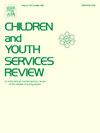通过照顾者与儿童的互动建立抑郁症的交易模型:评估冲突解决作为逆境家庭复原力来源的作用
IF 2.4
2区 社会学
Q1 FAMILY STUDIES
引用次数: 0
摘要
背景经历过早期生活照料逆境(ECA)的青少年患抑郁症的风险更高,这可能在一定程度上反映出他们更容易受到日后生活压力的有害影响,包括照料者心理健康状况不佳和人际冲突。为了弥补对照顾者和儿童之间的双向影响以及其中基于 ECA 暴露的差异的认识上的差距,我们评估了照顾者和儿童的抑郁症状对他们自己和对方在解决冲突过程中的情绪相关行为的影响,以及他们的行为对他们自己和对方从解决冲突到恢复任务的情绪表达变化的影响。参与者和环境161 个照顾者-儿童二人组(儿童年龄为 6-16 岁;49% 为女性青少年;45% 为接触过 ECA 的青少年的照顾者)参与了视频记录的冲突解决和随后的恢复任务。结果与压力敏感化模型的预期相反,在受 ECA 影响的家庭中,行为者-伙伴相互依赖模型的结果表明,照顾者的抑郁症状与孩子的支持行为之间存在正相关。在这些家庭中,只有儿童的支持行为与照料者随后在恢复任务中的积极情绪的增加有更大的关联。结论与压力敏感化模型相反,青少年对照料者痛苦的支持性反应可能会启动超越互动的积极螺旋。本文讨论了干预工作的意义。本文章由计算机程序翻译,如有差异,请以英文原文为准。
Transactional models of depression via caregiver-child interactions: Evaluating conflict resolution as a source of resilience in adversity-exposed families
Background
Youth who experienced early life caregiving adversity (ECA) are at increased risk for developing depression, which may in part reflect a heightened vulnerability to the deleterious effects of later-life stressors, including poor caregiver mental health and interpersonal conflict. Transactional models posit bidirectional influences between caregivers and children that operate over development and more proximally across interactions.
Objective
To address gaps in knowledge of bidirectional influences between caregivers and children, and differences therein based on ECA exposure, we evaluated the effects of caregiver and child depressive symptoms on their own and each other’s emotion-related behavior during conflict resolution, and the effects of their behavior on their own and each other’s changes in affect expression from conflict resolution to a recovery task.
Participants and setting
161 caregiver-child dyads (child age 6–16 years; 49 % female youth; 45 % caregivers of ECA-exposed youth) participated in videorecorded conflict resolution and subsequent recovery tasks.
Methods
Caregivers reported on their own and their child’s depressive symptoms. Trained coders rated caregiver and child positive and negative affect and supportive and unsupportive emotion-related behavior.
Results
Contrary to expectations derived from models of stress-sensitization, results of actor-partner interdependence models demonstrated positive associations between caregiver depressive symptoms and supportive child behavior, among ECA-exposed families. Among these families, only, child supportive behavior was also associated with greater increases in subsequent caregiver positive affect during the recovery task.
Conclusions
In contrast to models of stress-sensitization, youth supportive reactions to caregiver distress may initiate positive spirals that transcend interactions. Implications for intervention efforts are discussed.
求助全文
通过发布文献求助,成功后即可免费获取论文全文。
去求助
来源期刊

Children and Youth Services Review
Multiple-
CiteScore
6.30
自引率
6.10%
发文量
303
期刊介绍:
Children and Youth Services Review is an interdisciplinary forum for critical scholarship regarding service programs for children and youth. The journal will publish full-length articles, current research and policy notes, and book reviews.
 求助内容:
求助内容: 应助结果提醒方式:
应助结果提醒方式:


